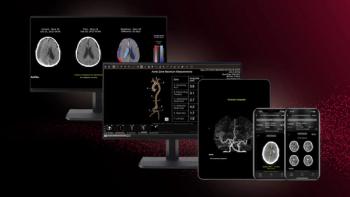
Computers tackle melanoma volume and therapy response
As the incidence of malignant melanoma increases, researchers are seeking ways to accurately and reproducibly measure tumor volume and therapy response. Computer-aided volumetry may be an answer.
As the incidence of malignant melanoma increases, researchers are seeking ways to accurately and reproducibly measure tumor volume and therapy response. Computer-aided volumetry may be an answer.
Dr. Michael Fabel-Schulte of the department of radiology at the German Cancer Research Center in Heidelberg and colleagues tested 3D semiautomated segmentation and volumetry of lymph nodes in 25 patients with malignant metastatic melanoma. CT scanning covered the neck, chest, abdomen, and pelvis.
Fabel-Schulte presented the results at the 2006 European Congress of Radiology.
Two independent readers evaluated 120 suspicious lymph nodes by using volume, time, segmentation quality, and number of corrections. Additionally, 20 lymph nodes were segmented manually.
Segmentation quality was rated acceptable to excellent in 81% by reader one and 79% by reader two. Correlation of the volume was highly significant between both readers.
Readers manually corrected 15% of the lymph nodes. The average time for automated segmentation per lymph nodes was 70 to 100 seconds, compared with 180 to 200 seconds per lymph nodes for the primary manual segmentation. Encouraged by the results, researchers suggest further study in a larger patient population.
Newsletter
Stay at the forefront of radiology with the Diagnostic Imaging newsletter, delivering the latest news, clinical insights, and imaging advancements for today’s radiologists.




























